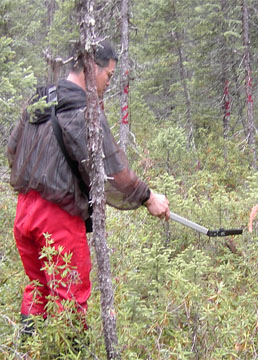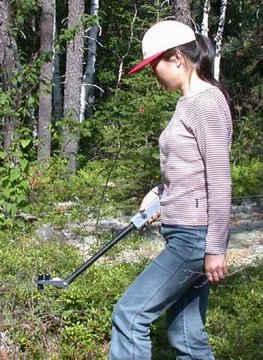(1) Indirect measurements for LAI and clumping index
Optical instruments have the advantages of high speed and
non-destructive nature. They are of potential to obtain quick
and low-cost measurements over large area.
At canopy level, LAI, effective LAI, clumping index, foliage
spatial and angular distribution can be measured using optical
instruments. Optical instruments measure the amounts of direct
or diffuse light penetrating the canopy from which the LAI
is derived. The gap fraction can be measured directly using
hemispherical photos or indirectly as the proportion of direct
or diffuse light penetrating through the canopy. The measured
gap fraction can be inverted to calculate the LAI. And the
effective LAI (LAIe) can be calculated from the hemispherical
distribution of gap fractions obtained from a wide range of
view angles.
We use three different optical instruments for measuring
canopy-level parameters:
- A digital camera and fisheye converter for digital hemispherical
photo acquisition;
- LAI-2000 for the effective LAI measurements (LAIe)
- TRAC instrument for the real LAI and clumping index measurements

Fig 1: A digital camera and fisheye
converter for digital hemispherical photo acquisition


Fig 2 : LAI-2000 for the effective
LAI measurements (left) and TRAC instrument for LAI and clumping
index measurements (right)
(2) Direct measurement (litterfall collection)
Direct measurement is a reliable approache for validating
the indirect LAI measurements. Direct measures involve destructive
sampling, litterfall collection, or point contact sampling.
Litterfall collection is useful for deciduous forests with
adequate spatial and temporal sampling schemes. In the litterfall
collection method, the LAI is obtained by weighting foliage
on a dry weight basis and using predetermined species-specific
leaf area to dry weight ratios. In our sugar maple sites in
Haliburton Forest, Ontario, we set up baskets in forests for
collecting leaves.

Fig.3: Direct LAI measurement
using litterfall collection method
|